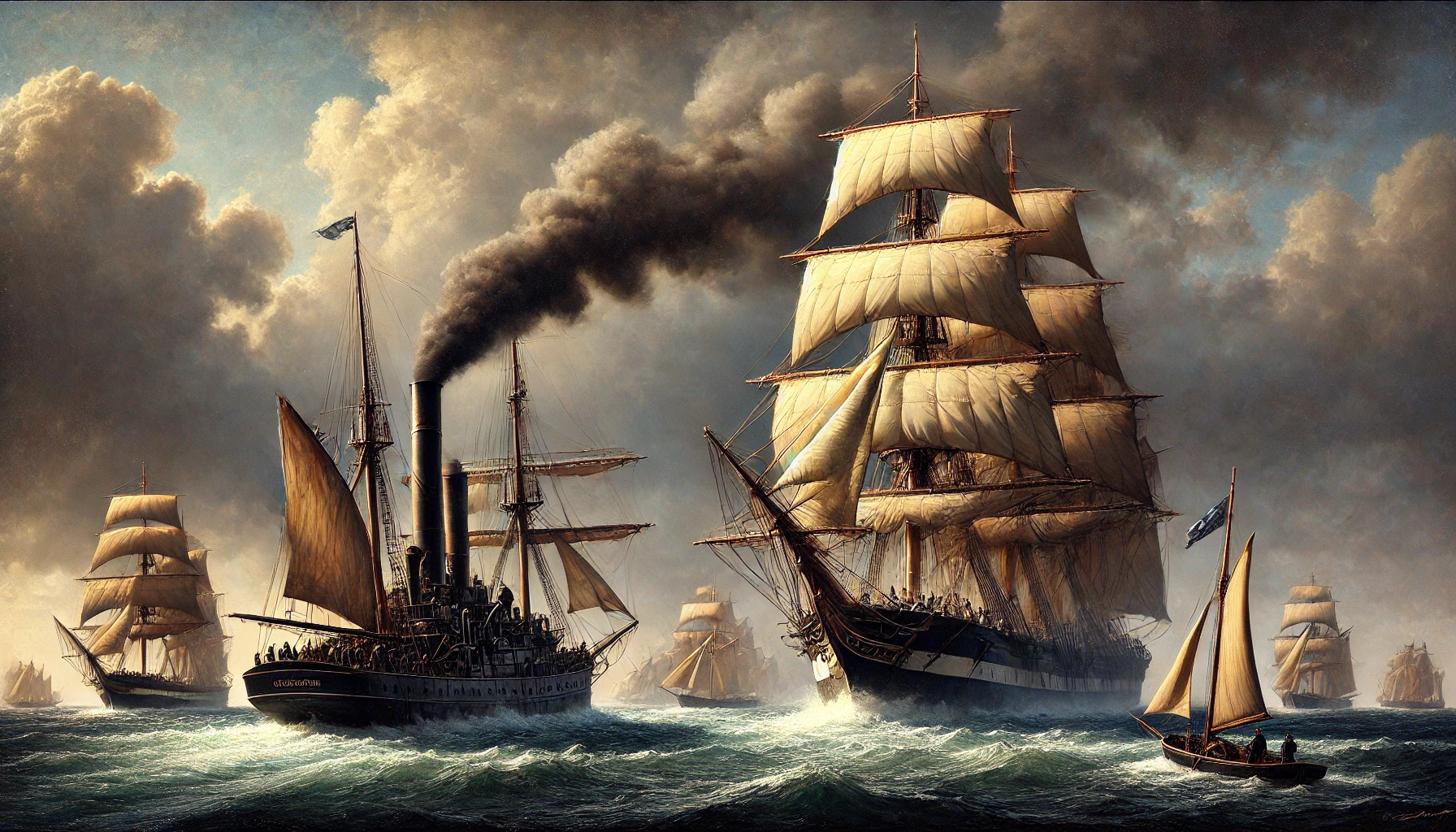The shift from sail to steam marked a crucial period in maritime history. This transition changed how ships were built and operated, leading to significant advancements in travel and trade. The advent of steam power allowed vessels to move faster and more reliably, transforming global commerce and naval power.
As shipbuilders adopted steam engines, they enhanced their designs and capabilities. The ability to navigate without relying solely on wind opened new routes and improved shipping efficiency. This innovation not only benefited merchants but also reshaped naval warfare, giving rise to more formidable fleets.
Understanding this maritime revolution helps to appreciate the foundations of modern shipping today. The impact of steam power extends beyond just transportation; it laid the groundwork for today’s technological advancements at sea. Exploring this transition reveals the remarkable journey from simple sailing ships to the powerful steam vessels that changed the world.
Innovations in Naval Architecture
The shift from sail to steam brought significant changes to naval architecture. These innovations included the use of iron hulls and advancements in steam engine design, which both revolutionized shipbuilding and enhanced naval capabilities.
Iron Hulls Over Wooden Hulls
Iron hulls replaced traditional wooden hulls, providing several benefits. They were stronger and less vulnerable to damage from collisions or enemy fire. Iron became the preferred material because it could withstand the rigors of naval warfare better than wood.
Additionally, iron hulls allowed for larger ships with more weapons and cargo capacity. The change to iron also enabled faster construction times and reduced the risk of rot that affected wooden ships. This innovation marked a major step towards modern naval design, paving the way for more durable and capable warships.
Advancements in Steam Engine Design
Advancements in steam engine design significantly enhanced naval power. Early steam engines were often inefficient and limited in their capabilities. However, engineers made improvements that allowed for faster, more reliable engines.
These engines became compact, which meant they could fit into smaller spaces on ships, leaving more room for weapons and crew. Enhanced steam engines also enabled ships to move at higher speeds, making them more agile in battle.
Overall, these innovations transformed naval architecture and set the stage for the modern fleets of today. The synergy between iron construction and improved steam engines greatly influenced maritime strategy.
Maritime Trade and Warfare
The shift from sail to steam power significantly changed maritime trade and the nature of naval warfare. Steam propulsion allowed for faster and more reliable travel on the water, directly impacting trade routes and military strategies.
Impact on Global Trade
Steamships transformed global trade by making it quicker and more efficient. With the ability to travel at higher speeds and navigate more reliably, cargo could move across oceans faster than ever before.
This advancement allowed merchants to increase the volume of goods transported and improve delivery times. As a result, markets became more interconnected. Bulk goods, such as coal and grain, became easier to transport thanks to steam power.
In addition, ports began to modernize to accommodate larger steam vessels, facilitating more international trade. As trade flourished, economies around the world experienced growth, driven by this maritime revolution.
Changes in Naval Warfare Tactics
Naval warfare saw dramatic changes with the introduction of steam technology. Steam-powered ships offered greater maneuverability and speed, allowing navies to engage in new tactics.
Prior to steam, sailing ships were dependent on wind patterns. Now, ships could maintain consistent speeds and positions during battles. This capability changed how navies strategized confrontations.
The shift also led to the development of ironclad warships, which offered enhanced protection and firepower. The ability to engage enemies more effectively resulted in significant changes to naval tactics, pushing fleets to adapt and develop modern warfare strategies.
Social and Economic Consequences
The transition from sail to steam had significant impacts on society and the economy. These changes altered employment in seafaring jobs and brought growth to port cities.
Shifts in Seafaring Employment
As steamships became more common, the demand for traditional sailing crew members decreased. Many experienced sailors faced job losses as steam-powered vessels required different skills.
Job roles transformed, emphasizing engineering and mechanical expertise instead. This shift meant new training programs were necessary to help sailors adapt.
Additionally, a new category of employees emerged, including engineers and stokers, who managed steam engines. While some sailors found new opportunities, others struggled to adapt to these changes.
Port Cities and Economic Growth
Port cities experienced notable economic growth during this transition. With steamships able to transport goods faster and more reliably, trade expanded significantly.
Ports upgraded their infrastructure to accommodate these new vessels. Improvements included larger docks and better cargo handling facilities.
Cities like Liverpool and New York thrived as commercial hubs, attracting businesses seeking to capitalize on increased shipping activity. This growth led to job creation beyond shipping, impacting local industries and services.
The rise of steam-powered ships marked a new era, driving both social change and economic development in coastal regions.

